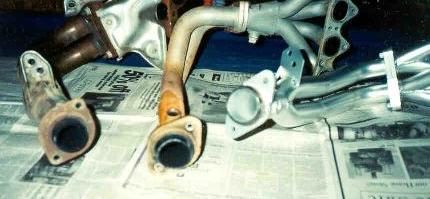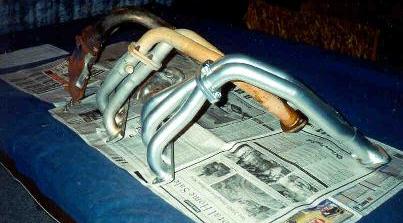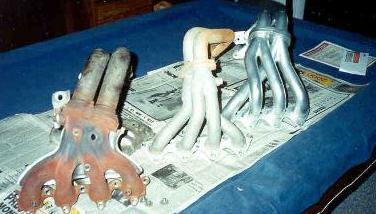|
I wrote this page years ago.
The comparison is of exhaust manifolds/header from a 5th gen D16Z6
engine. Most of this is old news, but I think it's great way
to see the difference between stock manifolds and the aftermarket
solution. From left to right:
Stock Exhaust Manifold, Bosal Ceramic Header, DC Ceramic Header

It's hard to tell by the picture, but it appears that the stock
exhaust manifold has larger tubes. However, to reduce noise, Honda
used a tube within a tube design. You can also see that the DC
header uses much smoother bends than the Bosal header.

In this picture you can see how much smoother the DC header is
compared to the other two. The tubes attached to the flange come out
at a better angle and are larger than either of the other headers.

You can really see the difference in the configuration. The stock
manifold has very sharp bends and combines all of the paths before
they reach the down pipes. The Bosal header has smaller tubes and
much sharper bends than the DC header. Also, the meeting point where
the four tubes meet into two tubes is much further down on the DC
than the others. One other important point is that the DC's welds
are much cleaner and better executed than the Bosal's.
Originally, the only reason why I swapped out the Bosal for the
DC was that the welds on the Bosal had rotted out and were leaking
pretty badly. I didn't expect to notice any gains with the DC.
However, I noticed a significant increase in mid range power. I was
impressed by the craftsmanship as well as the effectiveness of the
DC header. I would recommend DC to anyone. I have installed DC
headers on several cars and in each case there was a noticeable gain
in power. |